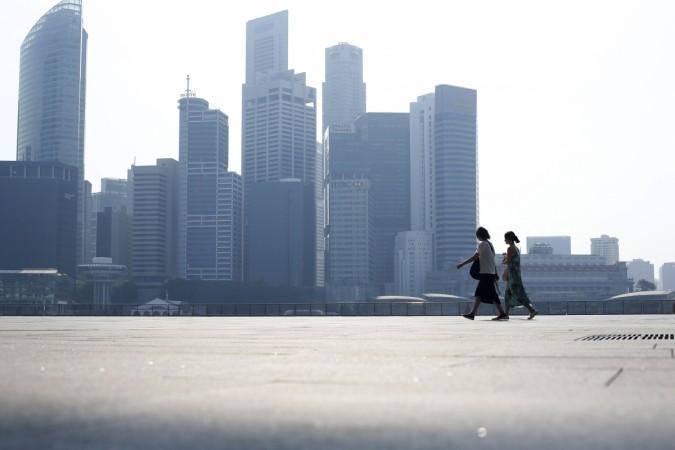
Pollution levels in Singapore's air once again rose to unhealthy levels on Monday, mainly due to winds bringing in smoke from forest fires in Indonesia, a problem that has plagued the nation for long.
The pollution levels on Monday breached the 100-mark threshold on the three-hour Pollutant Standards Index, according to the country's National Environment Agency.
The pollution index crossed 100 at about 1am and was as high as 113 early on Monday morning at 6am. It came down to 91 at 9am, still dangerously close to levels deremed unhealthy.
According to Singapore's health advisory, when pollution levels cross 100, citizens are advised to cut down on outdoor activities to limit exposure to haze. The presence of haze in the economic hub has impacted those with chronic heart or lung condition, and is said to be harmful to the elderly and pregnant women.
Predictions are that the haze levels could cross the record limit this year due to the raging forest fires and the conditions brought in by El Nino.
Singapore has been long facing the problem of haze and pollution for decades, and last year, the pollution index touched an alarming record of 401, according to Reuters. One of the main reasons behind the haze problem in the city-state is the clouds of ash that are blown over from forest fires in Indonesia's Sumatra island. The fires are started mainly to clear forests for plantations, and the blame has often been heaped on paper industries and palm oil manufacturing companies.
The problem that has dogged the state for years finally forced the government to pass the Transboundary Haze Pollution Bill 2014 last month that proposed fining companies that cause pollution regardless of whether the companies operate on the island, according to Reuters.
It is meant to provide for 'criminal and civil liability for conduct, which causes or contributes to haze pollution in Singapore'.
The implementation of this bill, however, could be tricky as it transcends borders and may not gain compliance from entities abroad.
Singapore has called for cooperation from ASEAN countries in helping it tackle the pollution problem, given that Indonesia alone remains to sign the 2002 legally binding environmental agreement on trans-boundary haze.
Deforestation in Indonesia had been going on at a dangerous pace, and recent studies show that the scale could be higher than what is seen in Brazil's Amazon forest.
Not just Singapore, but Malaysia has also had to face the ill-effects of Indonesian fires, with pollution levels reaching an extremely dangerous 700 last year in some areas of the country.
The increasing pollution and haze in Singapore is also likely to have an adverse impact on tourism and business
"If it goes on any longer, it must have some adverse impact on tourism numbers. Anything that impacts the environment like this, particularly for a place so well-regarded for its clean environment, must have some impact and inevitably it means a fall-off in visitor arrivals," Robert McIntosh, Asia Pacific executive director at CBRE Group Inc, had told Bloomberg last year.
Tourism contributes about six percent to the city-state's economy, and in 2012, Singapore was ranked as the most popular business destination in Asia.
However, since last year, stocks of several hotel and casino companies have seen a dip, partly because of fall in visitors over several months.

















